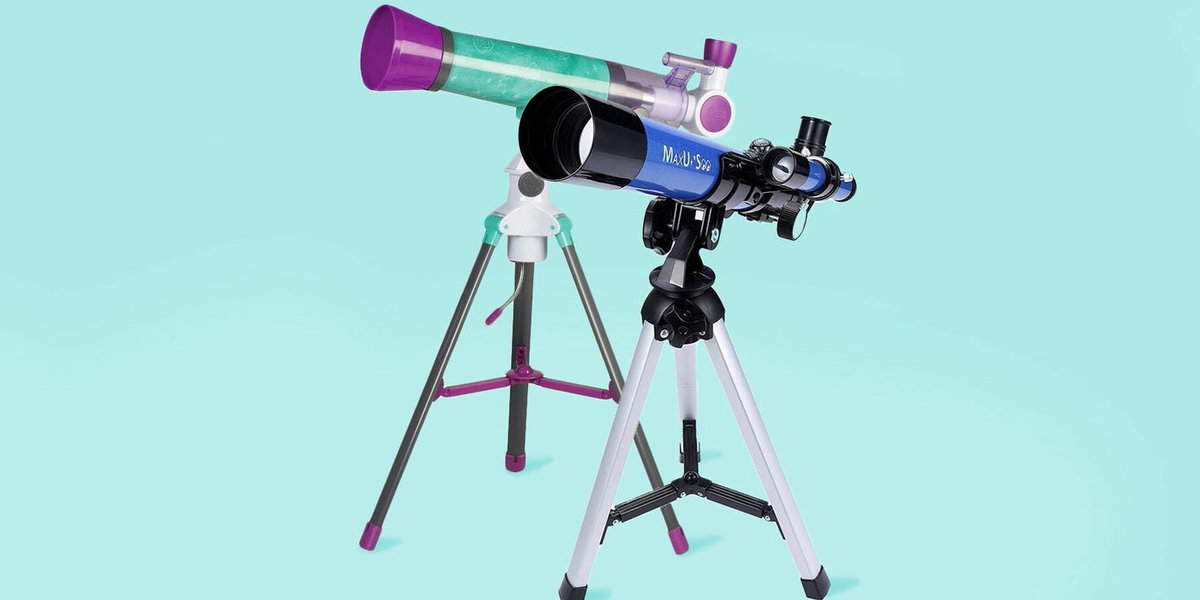Operating hours: Mon-Fri: 9:00-22:00
Sat-Fri: Closed
Store chain: Moscow – 74 stores, St. Petersburg – 13 stores, and 38 more cities in Russia. CIS – 3 stores, Europe – 11 stores, and Asia – 1 store.
Our company has extensive experience in collaborating and participating in tenders with both public and private organizations. We offer a wide range of pre-made solutions for educational institutions, as well as customized technical projects.
If you are a participant or organizer of a tender or public procurement process, please complete the form below to describe your request. Our dedicated customer service representative will reach out to you. You can also contact us by phone at +7 (812) 418-29-44 (ext. 117 or ext. 106).
Your shopping cart
Add your selected items to your cart
- Telescopes
- Microscopes
- Binoculars
- Sight tubes
- Magnifiers
- Accessories optics
- Other
- Night vision devices
- Thermal imagers
- Monoculars
- Astroplanetariums
- Weather stations, barometers, clocks
- Teaching sets
- Measuring instruments
- Compasses
- Levenhuk Ra
- Bresser National Geographic
- Bresser Junior Sets
- Chemical Experiment Kits
- Globes
- Interactive Globes
- Trichinelloscopes
- Maps, posters, literature
- Flashlights
- Power cells
- Action Cameras
- Astronomical domes
- Photo equipment
- Discovery OpticsOptics for Kids
Levenhuk LabZZMeasurement instrumentsActionsSALE
Recent Updates:
Archives of site updates by year:
Home " Site Updates " Tips for selecting a telescope for a child?
Tips for selecting a telescope for a child?
Considering an unconventional present for a child? A telescope can be both an extraordinary and practical gift. With an entry-level telescope, one can observe nearby and luminous objects such as the Moon, the closest planets, the Sun, and other celestial bodies.
Here is an article providing guidance on choosing a telescope for young explorers: which telescopes are suitable for initial experiments, what aspects to consider, and which accessories are necessary for observations.
Reproduction of any materials from the website without an active hyperlink is prohibited! "Four Eyes © 2002-2023
© 2023 Discovery, and associated logos and trademarks are the property of Discovery and its affiliated companies. All rights reserved. Used with permission. Discovery.com.
The content of this website is provided for informational purposes only and does not constitute a legally binding offer in accordance with the terms of Article 437 (2) of the Civil Code of the Russian Federation.
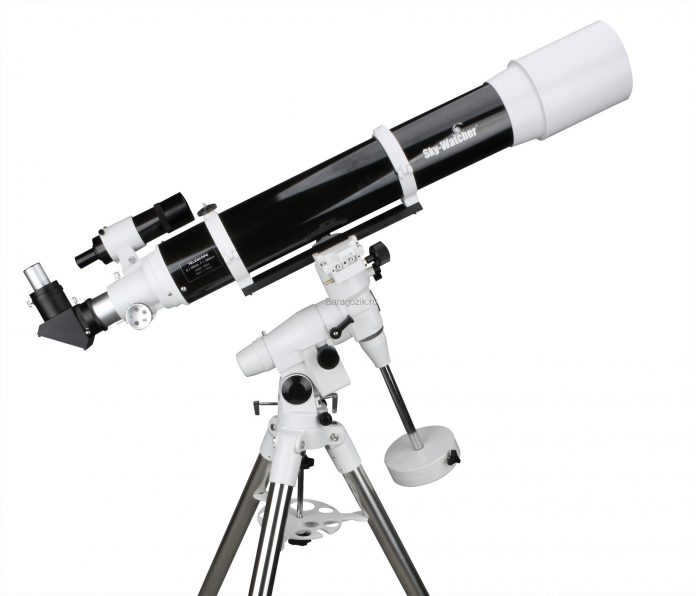
Does your child have an interest in astronomy and long for their very own telescope? In the past, it was unimaginable for most parents to make such a purchase. However, times have changed, and now it is feasible for any family to buy a telescope for their child. Of course, there are various types of telescopes available for purchase, each with different costs and optical capabilities. But let’s start by determining at what age this optical device can truly capture a child’s interest. Naturally, a five-year-old child may enjoy observing the constellation Ursa Major with their father for five or ten minutes, but they will quickly grow bored of this activity.
Educators and psychologists have determined that children who are eight years old and older should be provided with an optical telescope. At this age, children are capable of handling the telescope themselves and conducting independent observations of celestial bodies.
Furthermore, according to pedagogical practice, the presence of a child’s telescope sparks interest in subjects like physics and mathematics. This is a natural outcome, as a solid understanding of these sciences is crucial for pursuing a career in astronomy. Now, let’s explore the options available in the domestic market for purchasing a telescope.
Different Kinds of Telescopes: Reflectors, Refractors, Mirror-Lens Telescopes
Refractors – The most basic example of this kind of telescope resembles a tube with double-sided convex lenses inserted into it. These lenses refract light and then focus it, allowing the viewer to see an image through the eyepiece.
Refractors are user-friendly, low-maintenance, and resistant to dust. They can be used for observing both celestial bodies and objects on Earth. This type of telescope is particularly suitable for observing the Moon and double stars.
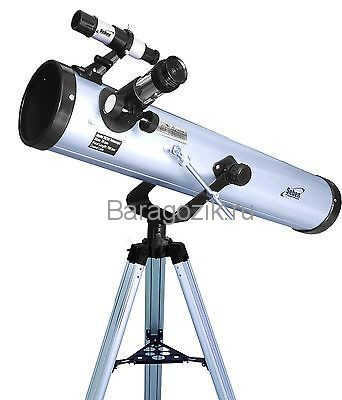
Reflector telescopes are optical tubes that contain two mirrors. The primary curved mirror is responsible for collecting light, while the diagonal mirror redirects the light into the eyepiece.
These telescopes are ideal for astrophotography and observing faint objects in space, such as galaxies and stars.
Mirror-lens telescopes combine the use of mirrors and lenses. The mirrors create the initial image, and the lenses correct any visual disturbances, resulting in a clear and sharp picture.
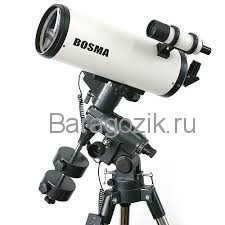
- A fully enclosed tube is used to protect the telescope from debris.
- The telescope is designed to be compact in size.
- The mirrors in the frame are securely fixed.
- This particular type of telescope allows for the observation of deep space objects.
- It tends to be more expensive.
- It has a lower level of brightness.
- The focus is directly influenced by the length of the telescope tube.
Experts recommend purchasing this type of telescope for older children who have already developed a strong interest in astronomy. It is especially suitable for children who plan to pursue a career in this field.
What factors should parents consider when selecting a telescope for their child: expert advice
Choosing the right telescope for an inexperienced person can be quite challenging. That’s why we have compiled a list of key factors that parents should prioritize when considering the option of gifting their child with such a unique and beneficial present.
If you are considering buying a telescope for your aspiring astronomer child, it would be wise to opt for an affordable telescope priced between four to six thousand rubles. This way, your child can first determine their level of interest in this new hobby. Some educators even recommend renting a telescope for a week to gauge the child’s reaction.
When it comes to buying a telescope, one important factor to consider is how much money you are willing to spend. It’s also a good idea to ask the child what they are interested in seeing through the telescope. However, it’s important to note that technical specifications are also crucial in making the right choice.
Let’s start by understanding the term “Aperture” in optics. In simple terms, aperture refers to the hole through which light rays pass. A larger aperture helps in reducing image blurring and improving image details.
- A telescope with an aperture of 80 mm will allow you to observe craters on the Moon from a distance of seven kilometers, as well as stars and dazzling nebulae.
- On the other hand, an aperture of 125 mm will enable you to see the clouds of Mars, monthly craters from three kilometers away, and even the nearest planets and stellar galaxies.
- A telescope with an aperture size of 250 mm will allow for magnification of up to 600x, providing detailed views of the lunar surface and the ability to study numerous constellations and galaxies.
Therefore, the larger the aperture of the telescope, the higher the achievable magnification.
Another important characteristic to consider is the focal length, which directly impacts the telescope’s brightness, optical magnification capabilities, and tube length. A longer focal length results in a larger telescope, but a narrower field of view.
The technical specifications of any telescope can be greatly enhanced by the proper selection of a mount – a rotating mount for the telescope. There are two types: alt-azimuth mount and equatorial mount. For novice astronomers, experts recommend using an alt-azimuth mount. It allows for rotation of the telescope tube in two planes: vertical and horizontal. The most popular mount is the Dobsonian mount, which enables rotation of the telescope tube in both right-left and up-down directions. It is particularly suitable for larger-sized telescopes.
Another equally important factor to consider when choosing a telescope is the size of your balcony or veranda. Some telescope models are too large and are not designed for observation from a balcony. They simply cannot fit on it.
A Review of 4 Popular Manufacturers of Telescopes for Schoolchildren
We would like to introduce four different options of telescopes that have received numerous positive reviews online for potential buyers to consider.
When purchasing a telescope for a child, experts suggest considering the “Synta Sky-Watcher BK 709EQ2” long-focus refractor.
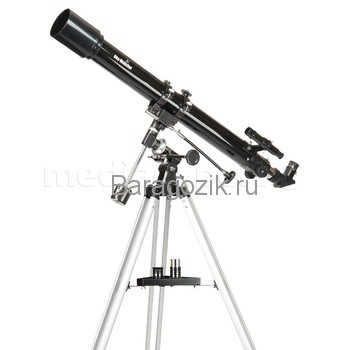
- Affixed mount.
- Optical scheme achromatized.
- Focal length of 900 mm.
- Lightweight.
Observation targets: The sun, planets of the solar system, terrestrial geographical structures.
Low price: 8,388 rubles.
Celestron NexStar 8 SE
- Lens diameter – 203 mm.
- Sharp image quality, thanks to a special coating for enhanced clarity.
- Includes a StarPointer finder.
- Computerized mount.
- Durable steel tripod.
- Comes with a night sky tour program.
Selling for 130,000 rubles.
One of the top sellers in 2017. BRESSER Arcturus 60/700 AZ.
- High image clarity.
- Glass with multiple layers of coating.
- Achromatic lens with a long focal length.
- Magnification of up to 120x
- Can be used with any lens
- The manufacturer has included a convenient bag for transporting the telescope, a modern compass, and a beautifully designed monthly map
Veber 360/50 in a case
- Reasonable price – 2140 rubles
- Comes with a 12-month warranty
- Manufactured in the PRC
- The telescope allows for viewing the phases of Venus, craters on the Moon, Saturn, and Mars
- An ideal choice for beginner astronomers aged 7-8 years and above
The telescope should not be pointed directly at the Sun
This device is great for children’s development and sparks a lot of interest
- If you are living in a big city, it is advisable to purchase a refractor telescope with a short-focus lens on an azimuth stand. If you have the opportunity to go outside the city and observe the stars there, then a reflector telescope with a diameter of 110-250 mm would be a good choice. It would also be beneficial to have a Dobsonian mount.
- If you plan on frequently transporting the telescope, it would be better to consider a mirror-lens telescope. These telescopes are lightweight and reliable. It would be ideal if it came with a convenient Dobson system.
- A child who is interested in studying distant galaxies would definitely enjoy a reflector telescope with a lens diameter of at least 250 mm.
- For children who are eight years old, it is recommended to give them a refractor telescope with a 70 mm aperture. Additionally, you can include a camera adapter so that they can capture amazing pictures of the moon to share with their friends.
Surprise your child with a telescope as a special gift, and they will have the opportunity to witness the awe-inspiring rings of Saturn, the Andromeda Nebula, and the craters on the Moon with their own eyes. Isn’t that an incredible experience!
The renowned Norwegian author, Joosten Gorder, described the telescope as the “Eye of the Universe”. This extraordinary instrument, the telescope, could only have originated from the vastness of the Universe itself. Give your child the “Eye of the Universe” – a cosmic tool that evokes a range of emotions!
Share this incredible gift with your friends:
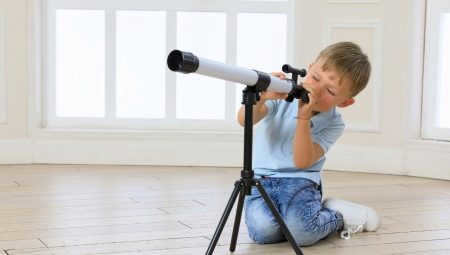
When it comes to children’s telescopes, they offer a wonderful way for your child to explore and learn about the moon, stars, and planets. With a telescope, your child can witness the breathtaking beauty of the cosmos and develop a passion for astronomy. As a parent, buying a telescope for your child not only supports their interest but also provides a valuable educational tool. It’s important to understand the different types of telescopes available and what factors to consider when making a purchase.
Overview
Astronomical telescopes were invented in the 17th century. Since then, various models of telescopes have been developed to cater to the needs of different users, including amateurs, professional astronomers, and children. Children’s telescopes are specifically designed with smaller magnification, compact dimensions, and lightweight for easy usage by kids.
All telescopes share a similar design. Let’s explore their main components:
- Objective Lens. This lens or mirror collects light and projects it to the point of observation.
- Eyepiece. It magnifies the object and corrects any distortions caused by the lens.
- Secondary Mirror. It also helps in magnifying the image.
- Mount. This mount is designed to securely install the equipment for stable usage.
Basic astronomical budget devices provide a magnification of up to 40 times. Nevertheless, even with this level of magnification, children can observe stars, Jupiter’s moons, Saturn’s rings, and other distant celestial objects up close.
Types
To choose a high-quality telescope and support a child’s interest in studying the universe, it’s important to familiarize yourself with the different types of devices: their characteristics, advantages, and disadvantages.
Reflectors
Also known as mirror telescopes, reflectors are characterized by their concave mirror lens. These lenses gather light at a specific point to focus the image.
Advantages of reflectors include:
- Affordable cost – mirror telescopes are typically cheaper than refractors and compound telescopes.
- Compact size, making them easy to handle.
- No chromatic aberration, which means they don’t produce unnatural colors around bright objects.
- Ability to observe celestial bodies in challenging conditions, such as nebulae.
One drawback of reflectors is their sensitivity to settings – they can easily be knocked down when transporting equipment. Another disadvantage is the open tube, which can lead to condensation buildup and the entry of dust.
Lenticular
These devices are equipped with built-in convex lenses. These lenses refract light streams, collect them in one point, and focus them.
Let’s consider the advantages of such devices.
- Telescopes are easy to handle – even a child can quickly learn how to use them.
- They have fast thermal stabilization. This means that the temperature inside the tubes quickly reaches equilibrium with the environment. As a result, warm air inside the tubes won’t distort the image or cause any shaking.
- Excellent color rendering and contrast.
- No need for separate adjustments. The lens telescopes are resistant to shaking during transportation and sudden temperature changes, which does not cause any settings failure.
- The design features a closed tube, ensuring reliable protection of internal parts from dust and adverse weather conditions.
- Capability to observe both celestial and terrestrial objects.
One of the drawbacks of telescopes is their large size, which can take up a significant amount of storage space. Additionally, they may not be suitable for observing small and faint objects.
Combined
These telescopes utilize a combination of lenticular and mirror equipment.
Benefits of these telescopes include:
- They are suitable for observing both nearby and distant celestial bodies;
- They are compact and lightweight, making them easy to carry and transport by hand;
- Their tube is closed, providing protection against dust and condensation.
These devices have the advantage of long thermal stabilization. However, they also have some drawbacks, such as high cost and difficult adjustment – it is not possible for a young child to perform independent adjustments.
The top-rated telescopes for children
After analyzing customer feedback, we have compiled a list of the best telescopes for children. Let’s provide a brief overview of each model.
- Levenhuk Strike 50 NG. This compact refractor weighs 3.6 kg and comes with an azimuthal mount. It is designed to be easy to handle and operate, making it suitable for children. The lens of the telescope is made of high-quality optical glass. The telescope also features a seeker with a wide field of view, which greatly simplifies the process of aiming at objects. Key technical specifications include a lens diameter of 50 mm, a focal length of 600 mm, a resolution of 2.8 angular seconds, and a magnification range of 30 to 300.
- Veber “Umka” 76/300. This telescope is designed for desktop installation and features an azimuthal mount. It is compact and lightweight, weighing only 1.95 kg. With a magnification range of 15 to 75x, it allows for detailed observation of various objects. The specifications include a lens diameter of 76 mm and a lens focal length of 300 mm. The telescope also comes with additional accessories such as a moon filter, 2 eyepieces, a finder, a Barlow lens, and accompanying documents.
- Levenhuk LabZZ MT2. This model combines the functions of both a microscope and a telescope. It offers a wide range of optical magnification, with a minimum of 75x and a maximum of 900x. The equipment is equipped with LED illumination, which is powered by 2 AA batteries. The objective lens has a diameter of 50 mm and a focal length of 500 mm. The telescope includes a wraparound eyepiece, a tripod, a finder, experiment kits, and other accessories.
- Edu Toys TS80: This lightweight and portable telescope is designed specifically for children aged 5 and above. Weighing just 0.733 kg, it is easy for kids to handle and use. The telescope offers a single magnification level of 45x, providing clear and detailed views of distant objects. It features a refractor design with an azimuthal mount and comes with an optical finder for easy target acquisition. The lens has a diameter of 40 mm and a focal length of 600 mm, ensuring impressive image quality.
How to select the right telescope?
When deciding on a telescope, it is important to consider the child’s age and temperament. However, it is not advisable to purchase such a device for children under the age of 4. Observing celestial bodies requires time and concentration, which four-year-olds may not be ready for due to their age.
At the age of 5, children tend to become more intelligent and find it easier to concentrate and focus. Manufacturers have designed special telescopes with a 10x magnification for young astronomers. If the child is careful and responsible, parents can opt for more advanced models.
Telescopes with additional lenses and informative brochures on astronomy are suitable for children aged 7-8. It is important not to purchase the cheapest devices with poor technical specifications for a seven-year-old. Many Chinese telescopes in the budget range have a blurry and fuzzy picture, which can disappoint the child and diminish their interest in studying celestial bodies.
For 9-10 year olds who have a keen interest in observing satellites, planets, and stars, mirror-lens telescopes are appropriate. Parents should consider choosing this type of equipment if they are confident that their child’s interest in astronomy is more than just a passing fancy. Models that allow not only observation but also photography and videography of celestial objects can further stimulate the child’s interest.
When selecting a telescope, it is important to consider the following factors:
- Weight and Portability: It is advisable to choose a lightweight and compact telescope that can be easily moved and transported.
- Easy Assembly and Disassembly: This is an essential aspect to consider when choosing a telescope.
- Optimal Lens Diameter: The recommended lens diameter is between 60 and 90 mm.
- Reliability and Low Maintenance: Refractor telescopes are particularly suitable for children as they are easy to operate and do not require frequent adjustments.
- Type of Mount: For children aged 8 and above, an azimuthal mount is preferred. This type of mount allows for easy rotation of the lens in both horizontal and vertical directions, making it easy to point the telescope towards the desired object.
It is advisable not to opt for costly devices that come with an impressive array of additional features. For a child, it would be more captivating to have equipment that includes various accessories, a collection of eyepieces, star maps, as well as engaging and informative materials.
How to Properly Utilize It?
Prior to stargazing, it is crucial to correctly set up the telescope. The same recommendations are outlined in all user manuals.
To properly carry out the adjustment, follow these steps:
- Locate a distant object (preferably at least 1 km away from the user) and align the telescope in a manner that places it in the center of the eyepiece.
- Secure the telescope’s position.
- Look through the viewfinder, achieve clarity, and center the object by making adjustments using the fine adjustment screws.
- Reassess the image in the primary telescope.
Even if the settings were properly configured, due to the light pollution within city limits, the child will not be able to fully appreciate the beauty of celestial bodies. It is advisable to study celestial objects outside of urban areas, such as in rural villages or in the mountains amidst nature.
Telescopes offer one of the most accessible ways for children to explore the starry sky and terrestrial objects. With a children’s telescope, they can observe objects like the moon, planets, and stars, or even observe nature. And if you decide to do this with your child, it can be a fun activity for both of you.
There is an overwhelming variety of telescopes available for children, and the difference in price between them is astonishing. We assume that you have already read multiple articles on this topic, but since you have arrived at our website, we are here to assist you. Therefore, if you are looking to ignite the curiosity of your young adventurer, this article will provide guidance on selecting the finest telescope for them.
One important factor to take into account is the concept, whether it’s your own or your child’s. If it’s your child’s idea, it’s definitely worth purchasing. Nurturing your young explorer’s thirst for knowledge is one of the most valuable actions you can take.
If it’s your own idea that you want to ignite your children’s curiosity with, first thoroughly investigate whether they have an interest in subjects like space, astronomy, and other related topics.
If you’re still unsure, consider asking if anyone you know has a telescope suitable for children that you can borrow. Alternatively, you could contemplate buying an affordable telescope to test out and later upgrade to a more advanced model if needed.
Various Categories and Varieties of Telescopes
As you delve into the realm of telescope research and exploration, you will soon discover that these remarkable instruments come in a multitude of diverse types. In this discussion, we will delve deeper into the specific categories and varieties:
Refractor Telescopes
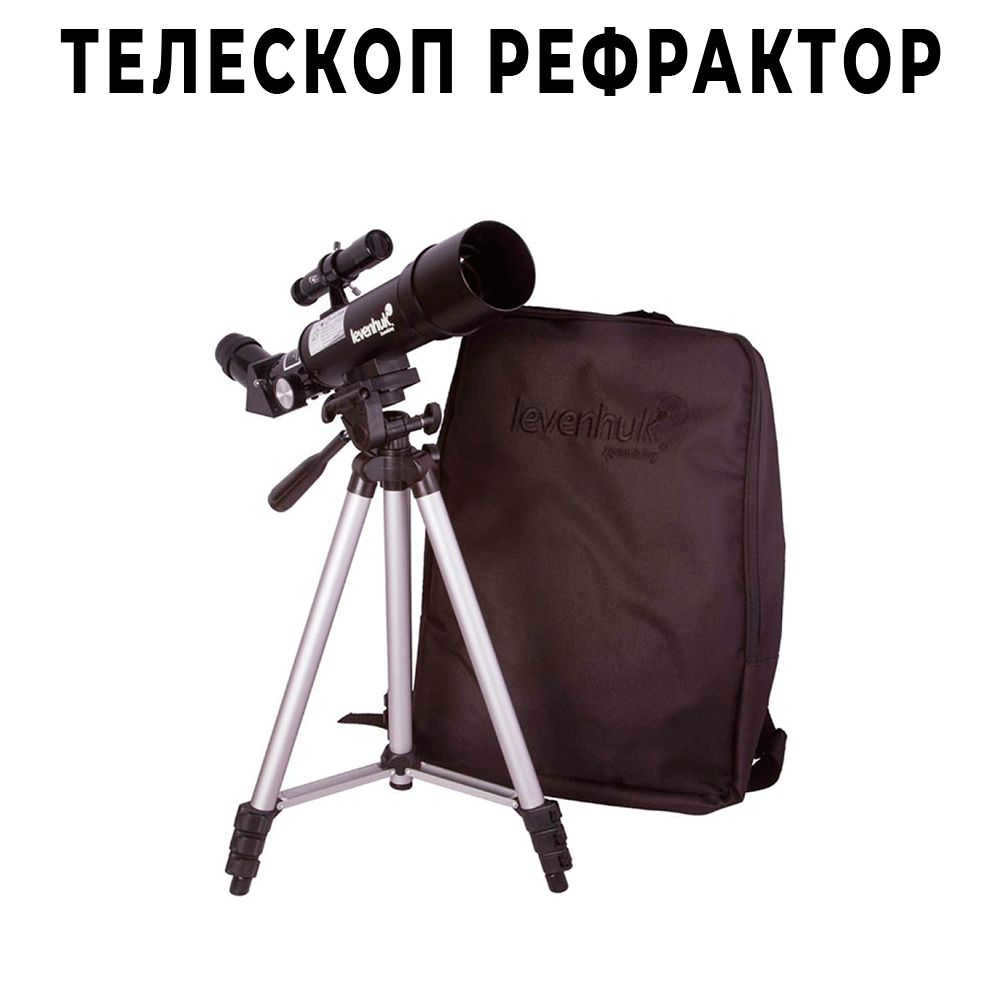
The refractor telescope is the most basic type that you can find online. On one end, it has a tube with a lens, and on the other end, it has an eyepiece.
When light enters the tube, it is bent and focused into a small point on one side of the eyepiece lens. The eyepiece lens then scatters the light back onto the retina, making the image appear larger than its actual size.
This type of telescope is suitable for observing objects in the sky and on Earth. If you’re looking for a versatile telescope that can be used by the whole family and works well for stargazing and urban observing, a refractor telescope is the best choice.
Nevertheless, there is a compromise. Refractor telescopes are not ideal for observing celestial objects in deep space (such as galaxies and globular clusters). Reflector telescopes, on the other hand, are well-suited for such endeavors.
Reflecting telescopes
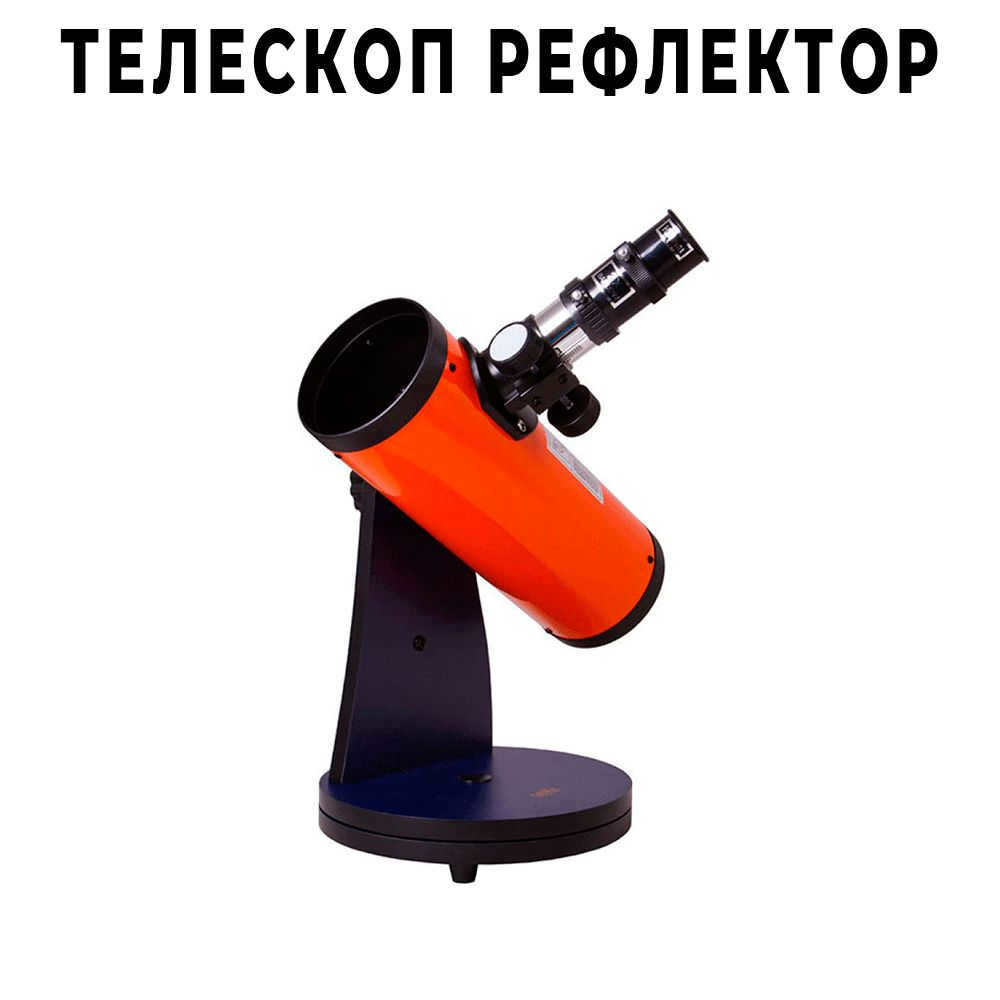
Reflector telescopes utilize a pair of mirrors positioned at an angle within the telescope, along with a single lens rather than two lenses. The first mirror is concave and directs light towards a focal point on a second mirror. This second mirror then reflects the light into the eyepiece, causing the image to spread across the retina, much like a refractor telescope.
Refractor telescopes, on the other hand, are more effective for observing distant objects compared to reflector telescopes. However, they are not well-suited for viewing objects that are closer in proximity. As a result, they are not ideal for terrestrial observations.
Telescopes with mirror-lens design
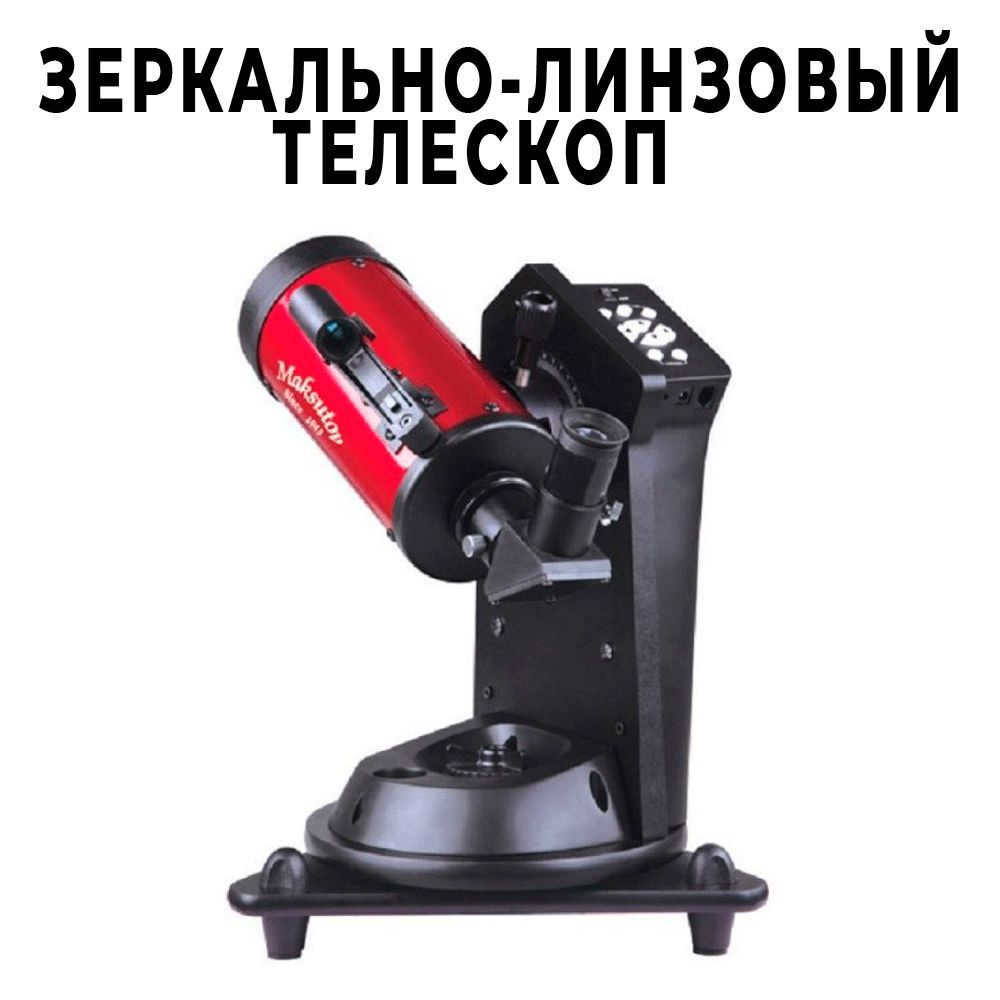
These telescopes utilize a combination of lenses and mirrors in order to enhance the magnification of the image.
These telescopes possess the capability to observe not only the Earth, but also the Moon, planets, and distant celestial objects. Additionally, they boast exceptional image quality.
Nonetheless, it should be noted that this superior image quality comes at a higher cost. The higher price may render them less suitable as a first telescope for a child.
Price range of telescopes for a school child.
When purchasing a product, it is important to consider its cost in relation to its performance. Before buying a telescope, it is essential to research its price. Higher prices do not always equate to better features. It is advisable to strike a balance between your budget and the offered features. Investing a bit more money in a durable product will prove to be worthwhile in the long run.
When purchasing a telescope for children under the age of 7, it is advisable to choose one that provides a high-quality, clear image without being overly expensive. This will help prevent them from becoming frustrated or losing interest when they are unable to observe anything of interest.
For children aged 7 and above, you may want to consider a slightly more advanced telescope, which could include additional lenses or educational materials on astronomy.
What is the desired view through the telescope for a young astronomer?
If your child is fascinated by the moon and planets, has a keen interest in observing nature, or is unsure of their specific interests, a refractor telescope would be suitable.
However, if your child has already developed a passion for the cosmos and desires to delve into its more profound realms, opting for a reflector telescope would be wise.
Only when you are certain that your child’s longing for a telescope is more than a passing fancy should you consider a mirror-lens telescope.
Additional accessories
When purchasing a telescope for your child, it’s important to consider the additional accessories that come with it. It’s unnecessary to spend money on a telescope that comes with a lot of extra items. Instead, opt for a simple yet powerful telescope that will give your child the necessary tools to get started.
One important accessory to consider is eyepieces. A telescope that includes multiple eyepieces is ideal for a child. Low magnification eyepieces are sufficient for viewing nebulae and other celestial objects, while medium to high magnification eyepieces are necessary for detailed viewing of planets and the moon.
Another great accessory to consider is educational material. Kids love to learn new things, and star charts and books are a fantastic source of knowledge. They are also fairly inexpensive. Consider getting your child a telescope that comes with star charts or astronomy software to enhance their learning experience.
By using the additional accessory, your child can capture images. By attaching a smartphone adapter to the telescope’s eyepiece and placing a phone onto the adapter, your child will be able to capture pictures of the objects seen through the eyepiece.
Selection of optional accessories.
Top-rated telescopes for children
- Veber 360/50 refractor telescope in a convenient case
- Levenhuk Skyline Travel 50 Telescope
- SKY-WATCHER MERCURY AC 60/700 AZ2 TELESCOPE
- TELESCOPE LEVENHUK SKYLINE PLUS 60T
- Sky-Watcher BK 707AZ2 Telescope
- Sky-Watcher BK 767AZ1 Telescope
- Levenhuk Skyline Travel 70 Telescope
- SKY-WATCHER MAK90 HERITAGE VIRTUOSO GOTO TELESCOPE, TABLETOP
- LEVENHUK LABZZ T3 TELESCOPE
- TELESCOPE KONUS KONUSPACE-6 60/800 AZ
- Refractor Telescope Veber PolarStar 700/70 AZ
- MEADE INFINITY 70 MM Telescope
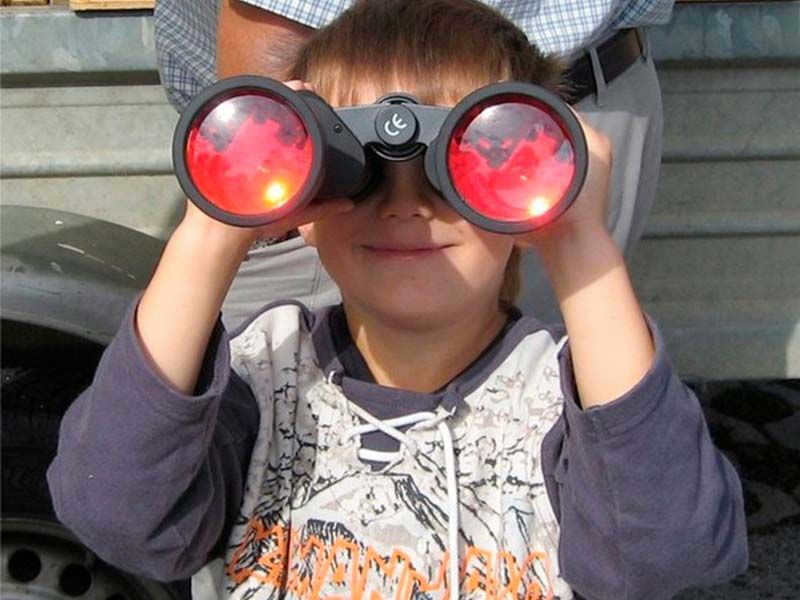
For a young explorer, a telescope, binoculars, or a telescope tube would make an excellent gift. The main concern for parents is choosing the right optics that will make the device a highly coveted gift for their child, as well as finding a place to purchase them at an affordable price. I suggest delving into the key features of each type of optical product – the telescope, telescope tube, and binoculars.
Online stores offering optical devices for sale
Here you can find a selection of online stores where you can purchase a variety of optical devices, including telescopes, binoculars, and telescopes specifically designed for children. The catalog offers options for both professional-grade optics suitable for teenagers and toy optics perfect for young kids.
Which optical device is the best gift for a child?
Aside from the common question of whether to buy binoculars, a telescope, or a telescope tube, there are other factors to consider. For instance, if a child is interested in observing objects on land, it may be more suitable to purchase binoculars rather than a telescope. Additionally, one might wonder whether to choose a monocular or a telescope. It is also important to understand the differences between binoculars and telescopes in terms of their optical capabilities. Let’s explore these questions together to gain a better understanding.
Astronomical Instrument
An astronomical instrument gives children the opportunity to explore the enchanting world of outer space. That’s why buying one could be the ultimate gift for a child. However, it’s important to understand what exactly an optical device is before making a purchase from an online store. This knowledge will help in selecting the most suitable telescope for a child. That’s why I’ll be focusing on this specific telescope.
Although telescopes are often associated with stargazing, it’s worth mentioning that there are models available for observing objects on Earth as well. These telescopes allow for the observation of television towers, roofs, industrial pipes, animals, birds, and more.
Perhaps it would be more practical to consider purchasing a versatile telescope rather than a specialized one?
Telescopes provide a mirrored image, which is symmetrical. While this may not be important for observing astronomical objects, it can be problematic when observing living creatures. For example, a flying duck’s movement would appear opposite when viewed through a telescope. It would appear to be flying to the left, but in the telescope, it would be seen as flying to the right.
Children’s telescopes allow kids to observe the night sky just like a regular telescope. A telescope can magnify objects that are far away, but it also narrows the field of view. Therefore, it is recommended to use optics for their intended purpose. Before purchasing a telescope for a child, it is advisable to learn about the different types available.
Categories of telescopes
There are three categories of telescopes – reflector, refractor, and compound models. These categories are based on the type of light-collecting component they utilize. Each category has its own strengths and weaknesses. Therefore, it is important to acquaint yourself with the different types of telescopes before purchasing one for your child.
The Reflector telescope utilizes a series of concave mirrors to gather light and create a focused image. This design allows for a clear and precise view.
Online retailers offer reflector telescopes at a more affordable price compared to other types of telescopes. This cost reduction is made possible by the simplified production process of the mirrors, as compared to the lenses used in Refractor telescopes.
The mirror telescopes are compact in size, especially the Dobsonian type, making them highly portable. Transporting a Dobsonian telescope is much more convenient than a lens telescope. Mirror telescopes are ideal for observing faint objects in deep space, such as galaxies and nebulae. The image distortion is minimal, although the contrast of details may be slightly reduced. It is important to adjust the mirrors when transporting the telescope.
Refractors gather light by bending light rays at a specific point using double-convex lenses.
Acquiring telescopes with lenses is recommended for observing the moon, planets within our solar system, and binary stars. However, lenticular optics are not as suitable for observing faint and small objects in deep space.
This particular kind of telescope possesses a straightforward design, as the lens does not require any adjustments. Consequently, lenticular telescopes necessitate minimal special maintenance.
When purchasing a lenticular telescope for a child, it is important to take into consideration that the refractor will have a larger size. Consequently, the weight will be heavier compared to that of mirror and hybrid telescopes.
Catadioptric (mirror-lens)
Mirror-lens telescopes, also known as catadioptric telescopes, are a unique type of telescope that combines both mirrors and lenses.
These telescopes, which are widely favored by astronomy enthusiasts, are the most popular models available in online stores.
One of the main advantages of catadioptric telescopes is their ability to observe both nearby and distant celestial objects.
However, it is important to note that catadioptric telescopes tend to be more expensive compared to reflectors with the same aperture size.
Telescope Functions
When choosing a telescope for a child, it is important to consider the observing conditions and the allowable errors (aberrations). Let’s explore the various functions that telescopes offer.
Telescopes serve two main functions:
First, they collect light using either lenses or mirrors. This enables us to see faint astronomical objects and the size of the lens determines the brightness of the image. Secondly, telescopes provide magnification, allowing us to examine specific parts of an object in greater detail.
At first sight, one might think that the most crucial function is the capability to enlarge the object, and the greater the enlargement, the better. This mistaken judgement sometimes leads to parents purchasing a telescope for their child, only to be disappointed with the purchase.
However, experts point out that in practice, things are different. Experienced amateur astronomers mostly use telescopes with the capacity to magnify the object to a factor of up to 50x. Slightly fewer use telescopes with a magnification of 50x to 100x, and even fewer still use magnifications over 100x.
What is the reason? The answer is actually quite evident. Some large celestial objects may appear small, but in reality, they simply emit a small amount of light.
For instance, if we take the Great Orion Nebula as an example, it would seem much smaller in comparison to the full Moon. In reality, these two celestial bodies are actually opposites in terms of their size. The reason for this is that the Moon is a bright object, while the Great Orion Nebula is a dim one. Consequently, in order to observe the Great Orion Nebula, it is advisable to opt for a telescope with a low level of magnification, yet possessing a large lens diameter.
Acquiring knowledge about the functionalities of a telescope can greatly assist in selecting the most appropriate one for your child. Therefore, prior to making a purchase, it is essential to familiarize yourself with the product specifications listed on the online store’s website, as well as thoroughly read the complete telescope description.
When selecting a telescope for a child, it is important to consider the type of optics, the range of settings, the mounting options (such as the adapter between the telescope and tripod), as well as the weight and size.
For children, refractor telescopes on an azimuthal mount are commonly used. These telescopes can be tilted up and down, as well as rotated around the axis. The azimuth mount provides a wider field of view and makes observation easier. Additionally, refractors on an azimuthal mount are generally lighter in weight compared to equatorial mount models. This is why they are often chosen for children, as they can be operated with ease.
The equatorial mount is a more complex and bulky option. It includes an extra axis and is particularly well-suited for prolonged observations. This type of mount allows for compensation of the Earth’s rotation, making it a great choice for children who are passionate about astrophotography.
To fully automate the preparation for observations, telescopes on equatorial mounts can be equipped with a compass and a tracking system such as GPS / GLONASS. They can also feature a small motor for automatic object tracking, ensuring precise alignment. These telescopes can be controlled via a remote control, laptop, or phone. Additionally, manual operation is possible if needed.
Telescopes on equatorial mounts are highly recommended for teenagers.
How to select the optimal telescope for a child?
Which type of telescope is appropriate for children? In the beginning, it is preferable to opt for a simple model, allowing the child to become accustomed to it. If the child displays interest in this field, then it is possible to progress to more advanced models – professional telescopes.
For children to acquaint themselves with the device and the field of astronomy, it is sufficient to purchase a telescope with a magnification capability of 10x.
For teenagers who have a desire to delve into the vastness of the celestial realm, I suggest selecting more sophisticated optics. For instance, a telescope capable of magnifying a stellar object by more than 45 times.
If your child has a fascination with the vastness of space, you have the option to purchase a sophisticated telescope that can magnify objects from 50x to 100x. Although this type of telescope may be a bit more expensive, it is definitely worth the investment.
Also, it’s worth noting that some affordable telescope models come equipped with a Go-To system. This feature allows you to easily search for and track celestial objects using a simple remote control. This modern enhancement is user-friendly and will make it much easier for children to explore and study the wonders of the night sky.
These characteristics are just the main criteria to consider when choosing a telescope for children. The ultimate choice should also take into account factors such as the child’s age, gender, level of interest in science, and other individual preferences.
Manufacturers of telescopes can include a star map and constellation guide with information about their size and location. Occasionally, the set may also include microscopes, which can broaden the horizons of studying nature. With a microscope, children can explore the field of biology, making their lessons much more engaging.
Spyglass (telescope) tube
Is it worth purchasing a telescope tube for a child? A telescope is a suitable tool for observing wildlife and terrestrial objects. It offers a lower magnification but a wider field of view compared to a telescope. In essence, when observing a squirrel, it is unnecessary to inspect every strand of its fur. Instead, a wide field of view, which the telescope is renowned for, is necessary to keep track of the squirrel’s rapid movements.
Therefore, if the child enjoys observing nature, I believe that a telescope tube would make an excellent gift! Furthermore, telescopes are compact and lightweight, making them easy to transport. The telescope’s body is durable and waterproof. Most telescopes also come with a special mount for attaching to a tripod, ensuring image stability when using higher magnifications.
It is worth mentioning that the practice of capturing images of objects through a telescope is currently on the rise. This contemporary phenomenon is referred to as digiscoping. As a result, telescope manufacturers frequently provide a special photo adapter to enable connection with a digital camera. These types of telescopes are often selected and purchased as presents for photography enthusiasts, particularly teenagers.
Binoculars vs Monoculars: Which Optical Device to Choose?
Are you torn between buying binoculars or monoculars? Let’s delve into what these two optical devices actually are.
Binoculars are essentially two visual tubes merged into one device, allowing you to observe distant objects with both eyes. On the other hand, a monocular is a compact telescope tube that serves the same purpose as binoculars, but with the ability to observe using only one eye.
However, before hastily purchasing either binoculars or monoculars for your child, it’s important to understand the intended use of the optical device. Binoculars and monoculars serve different purposes, such as hiking, theater use, stationary observation, and astronomical research, among others.
When purchasing binoculars or monoculars, it is important to note that their magnification and range are smaller compared to a telescope. As a result, binoculars and monoculars do not perform as well as telescopes in terms of overall capability.
However, the advantage of binoculars and monoculars lies in their lightweight design, making them suitable for children to use with ease. For children interested in observing objects on land, there are simplified versions available, such as children’s binoculars and monoculars.
Binoculars and monoculars with a magnification of 7-10 times can be used without a tripod. If you choose optical devices with a magnification higher than 12 times, it is recommended to purchase a tripod to minimize image shaking caused by hand movements.

